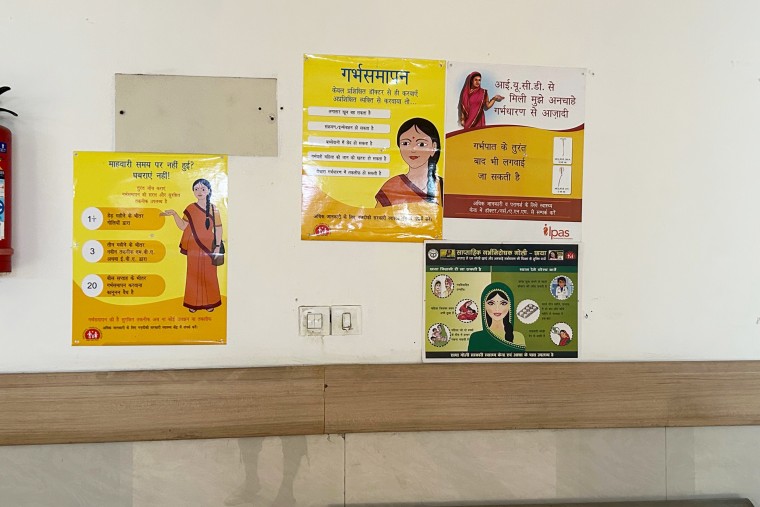“Sadly, entry to well being companies continues to be decided by components equivalent to the place a girl lives, how educated she is, her wealth quintile, and the group she belongs to,” stated Sanghamitra Singh, lead for coverage and applications on the Inhabitants Basis of India.
Whereas India’s fertility charge has fallen as girls general acquire better entry to schooling and contraception, inhabitants development throughout India is uneven. Southern states like Goa and Kerala report decrease charges than northern ones like Bihar and Uttar Pradesh, India’s most populous state. The states with decrease development charges are inclined to have extra schooling and employment alternatives for women and men alike.
However even in states like Odisha, the place the fertility charge of 1.6 youngsters per girl is decrease than the nationwide common, marginalized girls wrestle to advocate for themselves.
Sharada Majhi, who can also be from Odisha’s Kondh group however has no relation to Chandrika Majhi, stated she was jealous of her mates who continued going to highschool whereas her dad and mom had been arranging her marriage at age 15.
“I used to be a toddler myself after I had my first child,” she stated of giving start the next yr.
“I didn’t even know what intercourse is or what it results in, not to mention decide on whether or not I needed a toddler,” she stated.
Authorities details about household planning tends to emphasise girls’s accountability. On a latest go to to the Gautam Buddh Nagar district hospital in Noida, a metropolis in Uttar Pradesh that’s subsequent to New Delhi, the partitions had been plastered with posters on contraception tablets, feminine sterilization and secure abortions, whereas solely two talked about condoms or male sterilization together with different strategies.
Lack of expertise about different household planning strategies has helped make feminine sterilization some of the frequent types of contraception in India. In keeping with India’s newest Nationwide Household Well being Survey, which was performed from 2019 to 2021, it was utilized by virtually 38% of ladies to forestall undesirable pregnancies, in contrast with 0.3% for male sterilization, which is much less invasive.
Girls’s lack of entry to details about contraception, in addition to males’s relative lack of engagement in household planning, “has positioned an undue burden on girls to handle their well being and reproductive wants, with out actually having the company or autonomy to make their very own well being and fertility choices,” Singh stated.
A girl surnamed Valmiki, who declined to present her full identify for concern of retribution from her household, is a mom of 5 from the Dalit group, India’s lowest caste, and works in sanitation within the Uttar Pradesh metropolis of Meerut. She was by no means educated.
“I by no means knew that I may say how I felt about having extra youngsters. I solely knew about tubectomies,” she stated, referring to sterilization, “and so they felt too everlasting and I used to be scared.”
Some states, like Uttar Pradesh and Assam, are contemplating laws geared toward slowing inhabitants development that might prohibit civil liberties and entry to social welfare sources for individuals who have greater than two youngsters. In different states, folks with greater than two youngsters are ineligible to run for native workplace or apply for state authorities jobs.
Such insurance policies are unlikely to be efficient, Singh stated.
“Any try to impose penalties is biased in opposition to the poor, the illiterate, and socially deprived teams in society, the identical teams which have traditionally confronted discrimination and neglect,” she stated.
A greater method, she prompt, can be to extend males’s involvement in household planning, “and have extra women and girls get educated, be a part of the workforce and delay marriage and pregnancies.”

Singh and others say India’s economic system could possibly be remodeled by its working-age girls, solely 10% of whom had been both employed or searching for jobs in 2022, in keeping with the Centre for Monitoring Indian Economic system.
“Constructing Indian girls’s entry to schooling and employment could be a sport changer for a younger India,” stated Roshnara Mohanty, a social employee from Odisha.
A 2018 report from the consulting agency McKinsey discovered that India may add about $550 billion to its gross home product by growing girls’s participation within the labor pressure by 10 share factors.
Sharada Majhi, now 35 and a widow with two younger daughters, has since fashioned a collective of single and widowed girls to advocate for his or her land rights, working for optimistic social change in a cluster of villages in Odisha.
“God is aware of what I may have achieved if I used to be given the chance to review extra, to work extra,” she stated.


